March in Iceland comes with the anticipation of spring, more daylight, and slightly warmer temperatures. There are plenty of activities to do at this time of year.
Temperatures in Iceland in March, roughly hover between 28 – 38° Fahrenheit, and precipitation is at an all-time high. It is really no colder than other cities in the USA and Europe during winter!
Planning your trip to Iceland last minute?
Make sure to book your hotels and tours in Iceland in advance to ensure availability! The longer you wait, the more difficult it gets. Here are my top picks for your trip:
Top Experiences And Tours In Iceland:
- Golden Circle Full Day Tour From Reykjavik (Likely to sell out!)
- Silfra Snorkeling Tour (Includes photos + only small group)
- South Of Iceland Full Day Trip (Our pick!)
- Whale Watching In Reykjavik (On a luxury yacht)
- Northern Lights Bus Tour (Great to go with a local)
- Ice Cave Tour And Glacier Hike (Likely to sell out)
Tickets You MUST book in advance:
- Keflavik > Reykjavik Bus Airport Transfer (Skip the line!)
- Sky Lagoon Entrance Ticket (Includes 7-step spa ritual)
- Blue Lagoon Entry Ticket With Drink (Likely to sell out!)
Top picks for places to stay in Iceland:
- Hotel South Coast (Great central location)
- Grandi Reykjavik (Includes free breakfast)
- Hotel Kria (Close to black sand beach)
- Hotel Skaftafell (Mid-range price)
An Iceland packing list for March is necessary, as it’s certainly not warm, but if you prepare and dress warmly, the beauty of Iceland’s outdoors is yours for exploring!
Though the country is still emerging from its dark winter, there are so many of Iceland’s natural wonders you can see bathed in their winter glory.
Imagine sitting in a hot pot or hot tub with the crisp air blowing around you, or standing at the base of a waterfall while it both thunders down and drips with icicles. Maybe you step inside the blue, sparkling walls of an ice cave.
Though March in Iceland still attracts many tourists, the numbers are lower than the popular summer months. So take advantage of the smaller crowds, grab your cold-weather gear, and get ready for a remarkable experience of things to do in Iceland in March!
Get a FREE printable “Hidden Gems In Iceland” E-book by joining our private Iceland Facebook Group and share your photos and ask for tips and tricks.
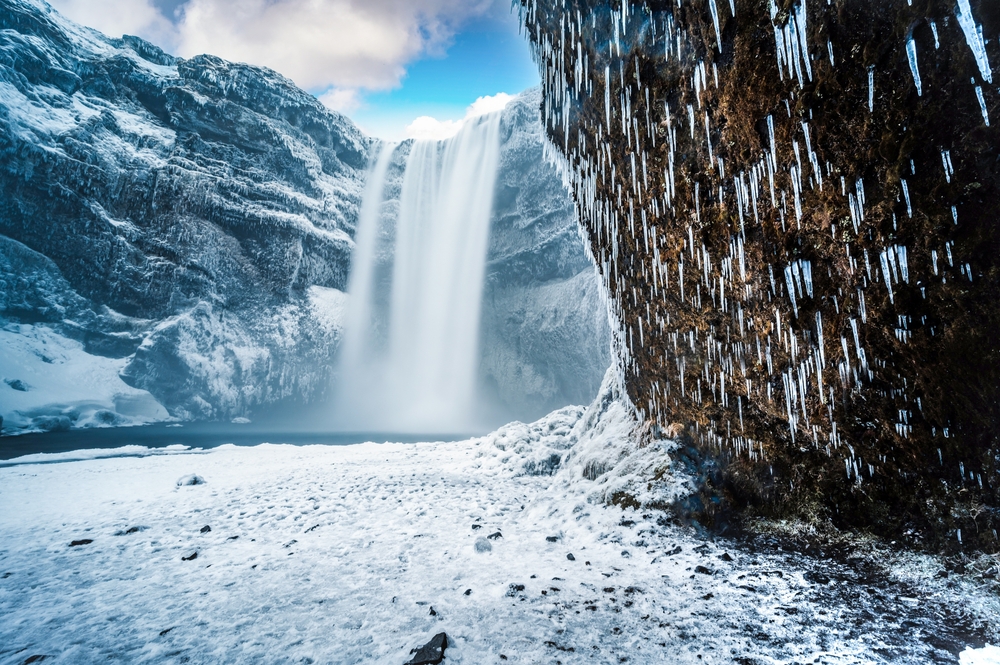
6 Things To Know Before Visiting Iceland In March
#1. Iceland’s Food and Fun Festival Brings You The Best Meals From Top Chefs
Foodies unite! For food lovers and those interested in Icelandic cuisine and history, be sure to plan your visit to Iceland to coincide with the Food and Fun Festival. This annual festival takes place over five days at the beginning of March (check the website for exact dates).
In 2002, the Food and Fun Festival was created in an attempt to boost tourism during these slower winter days. Both tourism in Iceland and the festival have exploded, creating something truly wonderful for both tourists and locals alike.
Notable chefs are invited from around the world where they join Iceland’s local chefs to create the best multi-course meals using Icelandic ingredients. Their menus are debuted at many of Iceland’s prominent restaurants including Apótek, Vox, and Essensia. The menus are full of seafood, lamb, and dairy, all of which are staples in Iceland’s food scene.
The festival concludes with the finalist chefs competing for the ultimate title of Food and Fun Chef of the Year. What better way to take a break from Iceland’s March weather than to warm up indoors with delicious Icelandic food?
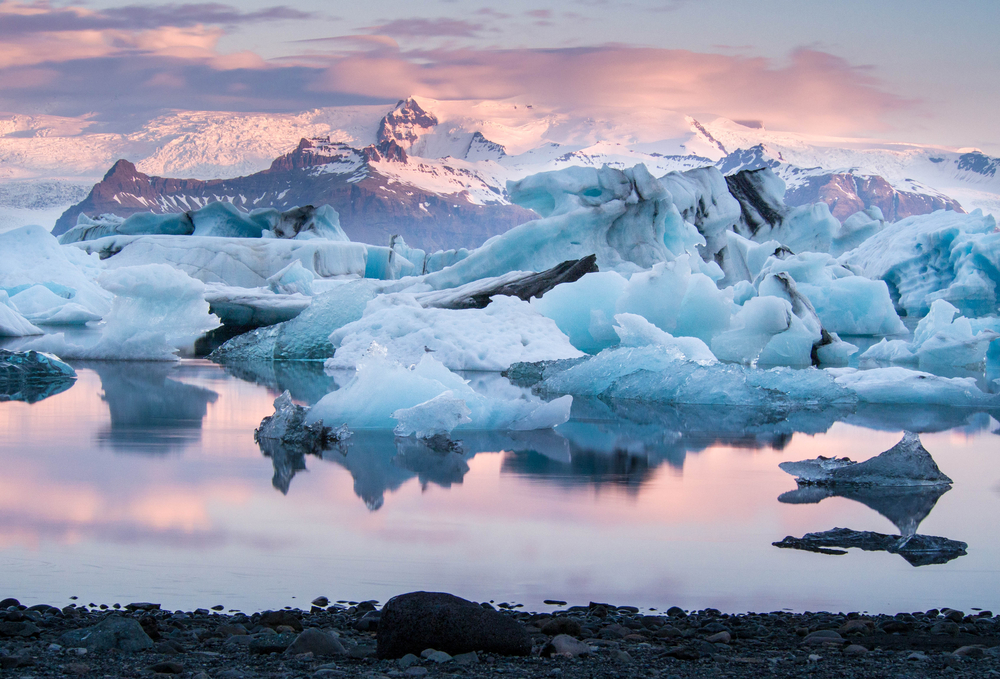
#2. Drinking Beers With The Locals Is A Great Way To Celebrate Beer Day
March in Iceland starts with a bang with Beer Day (Bjórdagurinn), a celebration of the end of Prohibition.
The beer ban was lifted on March 1, 1989. As you might imagine, the celebrations and beer consumption that ensued was extreme. Though today’s March 1 celebrations have significantly died down since that first March 1st in 1989, the country loves a good reason to drink beer and celebrate, and often the Reykjavik bars will have special deals that day.
When beer was reintroduced into Icelandic culture, it evolved to include more adventurous beers as well as the rise of microbreweries and happy hour. The result was an exciting downtown nightlife beginning with adults partaking in restaurant happy hours followed by young adults taking over the bars and clubs at night.
If you happen to be in Iceland on March 1st for this unofficial holiday, be sure to join the locals at the nearest bar and partake in the celebrations. Raise your glass and say Skál! (‘cheers’ in Icelandic) and take advantage of the fact that it’s legal to buy beer in the country! Add this to your list of things to do in Reykjavik in March!
Here is our list of the 10 best places to try Beer in Iceland!
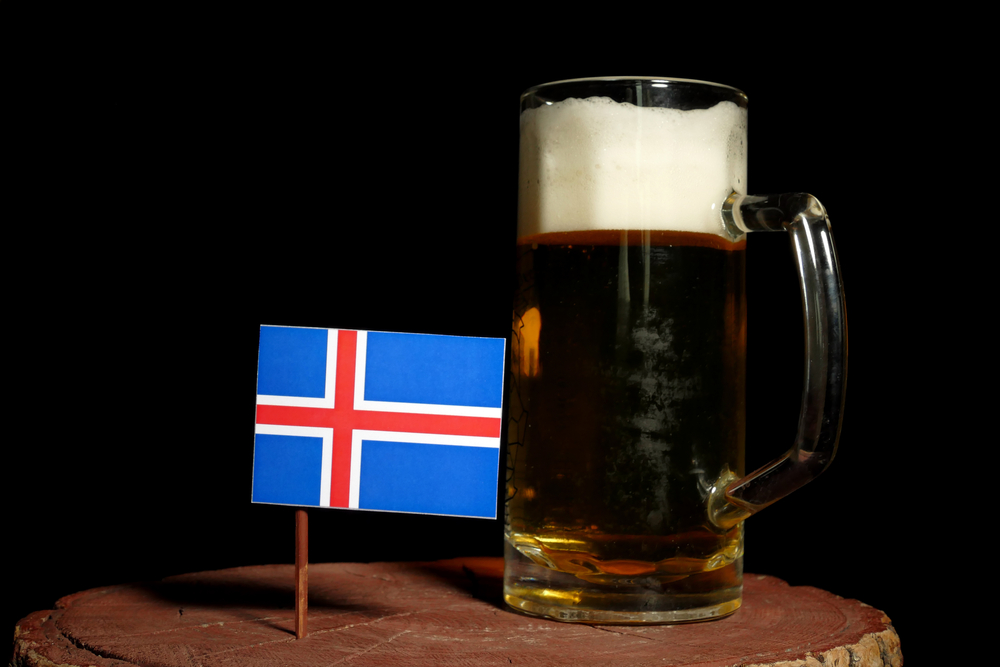
#3. Touring A Natural Glacier Ice Cave Is An Unbelievable Winter Adventure
Iceland is notorious for its miraculous, unique nature, and the natural glacier ice caves are no exception. The changing temperatures throughout the year and the flow of glacier meltwater help create spectacular, brilliant, crystal blue ice walls leading you into fantastic, otherworldly landscapes. We have a list of the best Iceland Glacier Tours!
One of the most remarkable aspects of the ice caves is that you’ll never see the same ice cave twice. Each year the ice is shaped differently, but each year the result is equally spectacular. Some of the most famous ice caves in Iceland include the Katla Ice Cave, the Vatnajokull Ice Cave, and the Langjokull Ice Cave.
Visiting and touring the natural ice caves is an activity only possible in the winter, So Iceland weather in March is a perfect time to explore. After March, the ice starts to melt and the caves crack and collapse and become dangerous.
Because of the unpredictability of the ice caves, you’re required to book a tour to enter the cave with an experienced guide. As soon as you’ve decided to visit Iceland in March, be sure to book your tour tickets as soon as possible. Due to high demand and a limited number of available months, the tours tend to sell out quickly.
This website will help you choose a tour option that is most appealing to you. Some of the tours offered to take you to man-made caves, so if you’re looking for a natural ice cave tour, be sure to look for that distinction in the tour description.
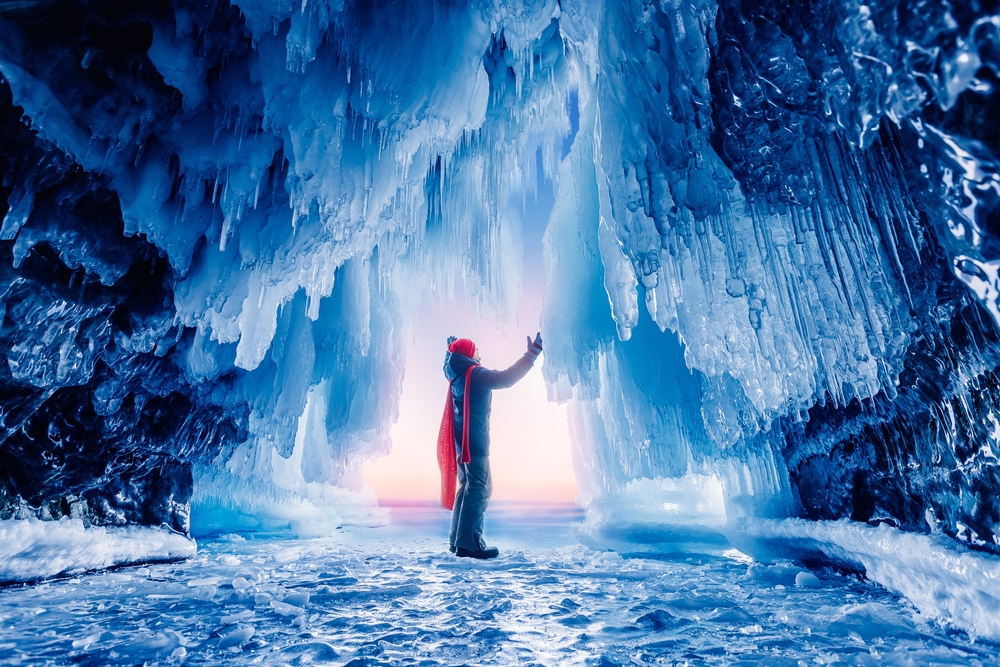
#4. If Conditions Are Favorable, You Might Catch The Elusive Northern Lights
You have a great chance of seeing the Northern Lights in Iceland during March! The brilliant, natural light show is strictly a winter phenomenon and is one that people from all over the world flock to Iceland to see. The days are still short enough to be conducive to spotting the elusive lights.
The Northern lights can usually be seen from September to April. Be aware though that because the days are beginning to get longer again, you’ll most likely have to wait until late in the night for the sky to be dark enough to see the lights.
However, Iceland’s weather is often rainy or snowy, and more often than not, at least part of the night will be overcast and cloudy. You may know there’s solar activity, and yet sometimes you won’t be able to see a thing.
Patience is key; perhaps if you wait long enough, you’ll be rewarded with a brilliantly colorful night sky.
Maximize your chances of seeing the Northern Lights, by taking a guided Northern Lights tour. This is a popular option because the tour guides are incredibly knowledgeable and chase the lights for a living.
They know the go-to places to wait and watch. Despite their extensive knowledge and their desire to give you the best possible shot of seeing the lights, they do not control the lights. We have a list of the Best Northern Lights Tours in Iceland!
Most tour companies do allow you to rebook a second trip at no extra charge if the lights were not visible during your tour.
You can also take your rental car and drive away from the city to search for the lights yourself. The farther you are from the city light pollution, the darker the skies and the better chance you have of seeing anything.
We suggest you track the aurora strength and visibility and continue checking it throughout the night. The forecasts change frequently, sometimes by the hour or minute. Though Northern Lights viewing takes some preparation and a whole lot of luck, it’s a remarkable sight and one worth taking a chance on!
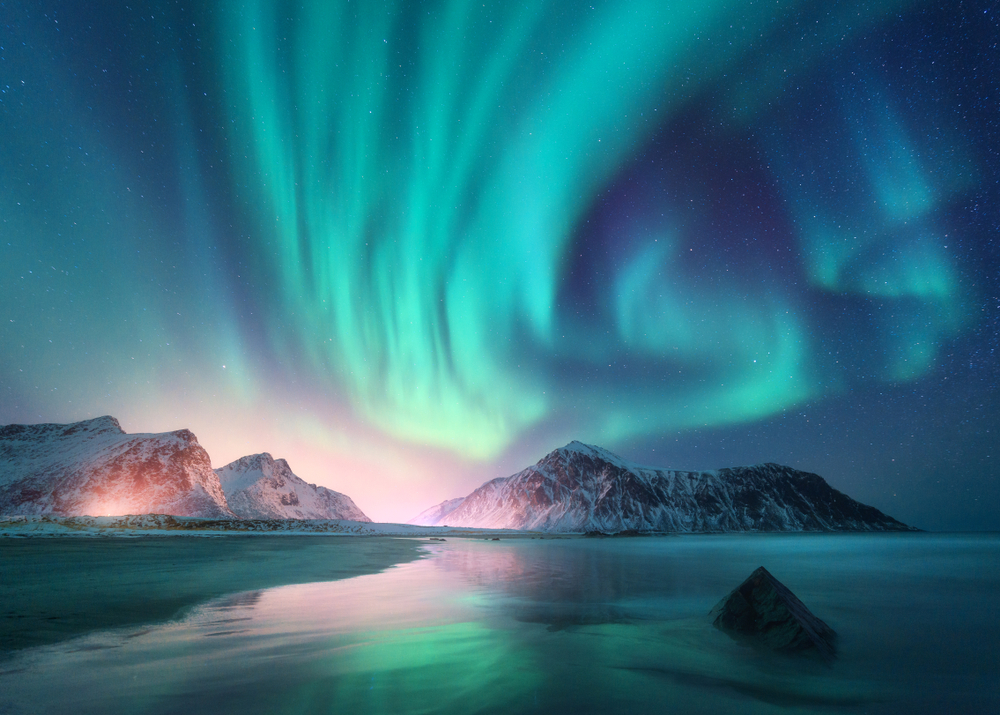
#5. Iceland in March Is The Time To Take Advantage Of Hot Pots and Hot Tubs
Bring your swimsuit! We cannot stress this enough. If you’re looking for what to do in March in Iceland there is nothing quite like sitting in a steaming hot tub or hot pot in the winter, defrosting while reflecting on the adventures of your day!
Understandably, it does seem counterintuitive to bring a swimsuit to a country called Iceland during one of the colder months of the year, and yet there are so many opportunities to wear it. Every town in Iceland has at least one swimming pool complex.
These complexes often include a heated lap swimming pool, a heated kiddie pool, and multiple hot tubs of differing temperatures. Laugardalslaug, the main pool in Reykjavik, even has a salt-water hot tub.
If bathing in the middle of nature while gazing at glaciers, snow-capped mountains, or waterfalls is more your style, Iceland has a remarkable number of hot pots throughout the country for your enjoyment.
Though some of the more popular hot pots like Selljavallalaug, Hrunalaug, or the Reykjadalur Hot Springs have the potential to be congested with visitors (unless you visit in the early morning or late evening), you’ll often find the hot pots offer more peace and solitude than the swimming pool complexes.
We have a list of the Best Hot Springs In Iceland!
If you’ve begun planning a trip to Iceland in March, you’ve no doubt heard of the extremely popular Blue Lagoon, or its northern counterpart, the Myvatn Nature Baths. Both of these are great alternatives to the hot tubs and hot pots are much more expensive.
They are both impressive and relaxing, however, the increase in tourism has made them overcrowded. Even in an “off-season” month like March, the Blue Lagoon requires advanced booking and it’s encouraged to arrive at the Myvatn Nature Baths right when they open. Despite their crowds and hefty prices, both experiences are worth a visit at least once.
The Blue Lagoon is in a great area and is actually on our list of Best Places To Stay In Iceland. In this post, we offer suggestions for where to stay around the Ring Road!
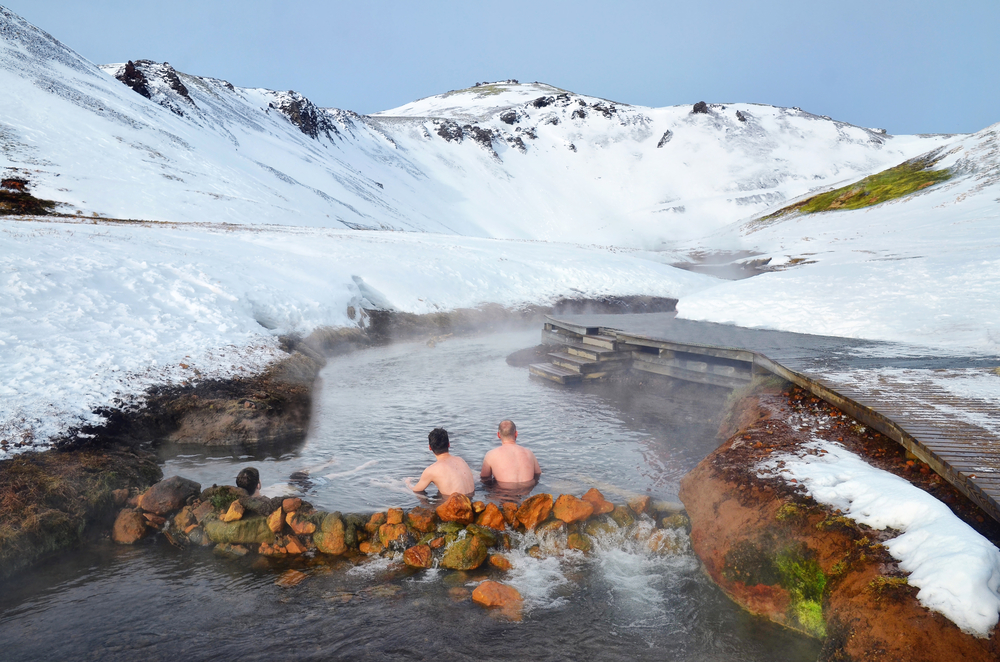
#6. Checking Road Conditions Is Critical When Driving In Iceland In March
If you’re visiting Iceland during March, you’re likely to experience all that comes with the end of winter in a cold country, and that potentially includes snow or ice on the roads.
If you’re staying around Reykjavik you usually won’t need to worry, because the roads around the capital region are very well maintained and the weather is nicer than elsewhere in the country. Many of the main tourist attractions are also almost always still accessible.
For March driving in Iceland, it’s important to keep an eye on the road conditions as they’re constantly changing. Use common sense when deciding whether it’s safe to be out driving, and if you don’t have experience with driving in winter conditions, be extra careful and err on the side of caution. Don’t forget to check out our guide on driving in Iceland!
Though you hope you’ll never be in a situation to use them, Iceland has search and rescue teams that will come to your aid if you find yourself in a bind. It’s usually tourists they have to rescue who get themselves into dangerous situations as a result of overconfidence and/or a lack of preparation.
If you choose to rent a car in Iceland in March, your car will come equipped with winter tires that are designed to be safer when driving on ice.
Salt and snowplows are used on the main roads, but the farther you venture from the capital region, the less the roads are maintained.
You should always be careful when driving the highland roads (F roads). If you happen to find yourself driving on one (some are completely closed in the winter), you should exercise a healthy dose of caution.
Even in the summer, they require a 4×4 to drive through. F roads are gravel roads and usually result in a rough driving experience. They are not designed for fast driving or winter driving.
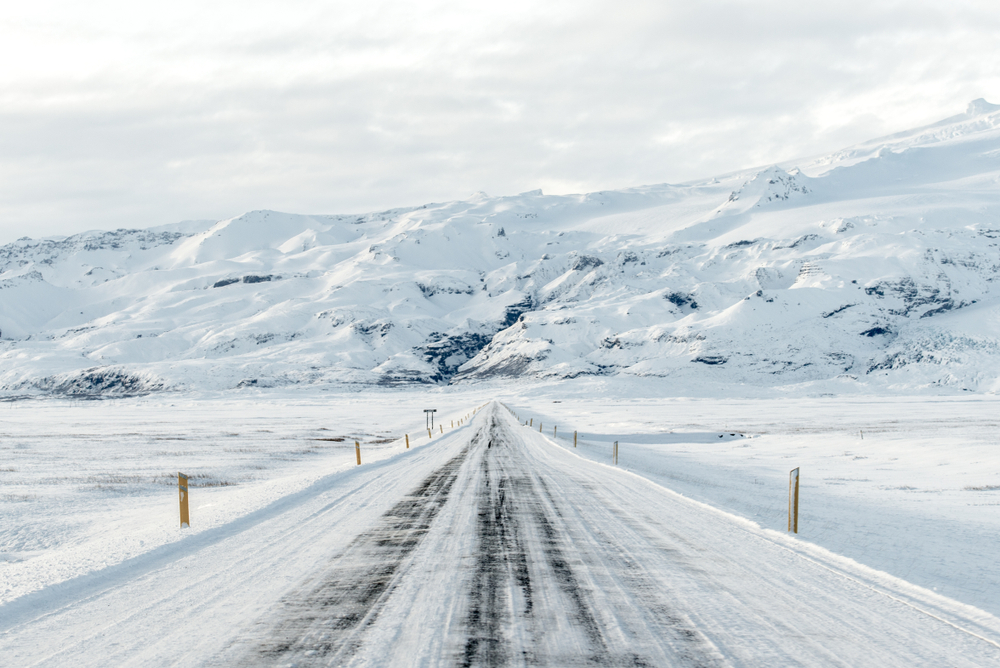
Iceland in March Weather Tips
Traveling to Iceland in March can be a magical experience, offering unique landscapes and activities. However, the winter weather in Iceland is unpredictable and can be challenging, requiring visitors to be well-prepared.
General Iceland Weather in March:
- Iceland Temperature: Across the country, average Iceland temperatures in March range from -2°C to 3°C (28°F to 37°F).
- Precipitation: Mixed precipitation, with both rain and snow common.
- Average Snowfall: Snowfall varies greatly by region, but higher elevations and northern areas see more frequent snow.
- Average Rainfall: Around 82 mm, though this can vary depending on the region.
Reykjavík Weather in March:
- Temperature: In Reykjavík, temperatures in March are slightly milder, averaging 0°C to 4°C (32°F to 39°F).
- Precipitation: A mix of rain and snow, with more rainy days as spring approaches.
- Average Snowfall: Snowfall in Reykjavík is less compared to the rest of the country but still occurs in March.
- Average Rainfall: Reykjavík sees an average rainfall of about 82 mm, similar to the national average.
Weather Tips
- Dress in Warm Layers: Wear a waterproof and windproof outer layer, gloves, and a hat. Temperatures in Iceland in March, are between 28 – 38° Fahrenheit so it is quite cold!
- Pack a Swimsuit: Essential for enjoying Iceland’s famous hot springs.
- Check Weather and Road Conditions Regularly: Use reliable sources like the Icelandic Meteorological Office as driving in Iceland in March can be challenging.
- Plan for Limited Daylight: Maximize activities during shorter daylight hours.
- Enjoy Unique Winter Activities: Don’t miss northern lights, glacier hiking, and ice caves.
- Be Flexible with Travel Plans: Have alternative plans due to potential weather changes.
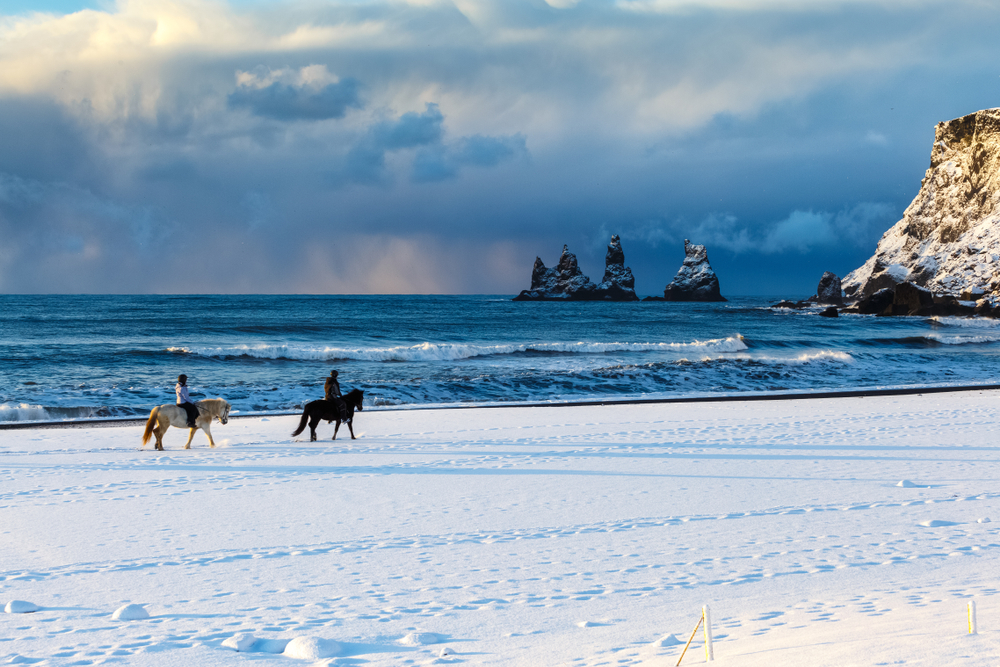
If you’ve been considering traveling to Iceland in March, go ahead and book your trip! It has the potential to be the perfect time of year with fewer tourists and the possibility of northern lights. Iceland has proven itself to be a country worth exploring any time of year.
Be careful and pay attention to the winter weather conditions, but have fun, drink some beer, experience the best of Iceland’s cuisine, and finish off the day with a nice soak in a natural hot pot! If you have any questions about how to maximize your trip, please let us know in the comments.
If you are planning your trip, we have a 5 Day Iceland Itinerary, 4 Day Iceland Itinerary, and 3 Day Iceland Itinerary, depending on your needs. We have carefully crafted these itineraries to include the best of the best stops and things to do in Iceland!

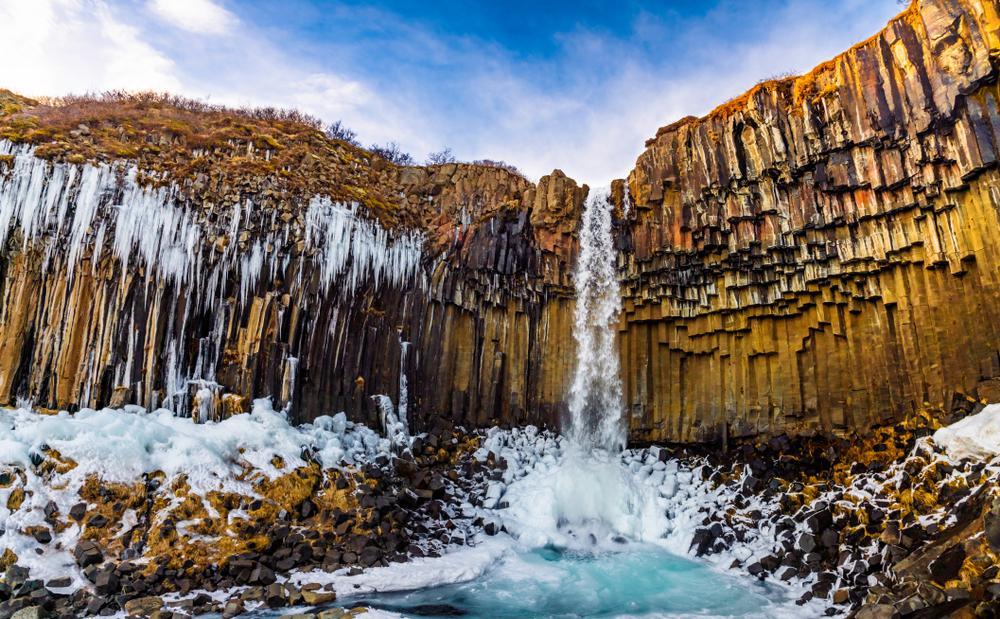
 15 Best Things To Do In The Westfjords Iceland
15 Best Things To Do In The Westfjords Iceland